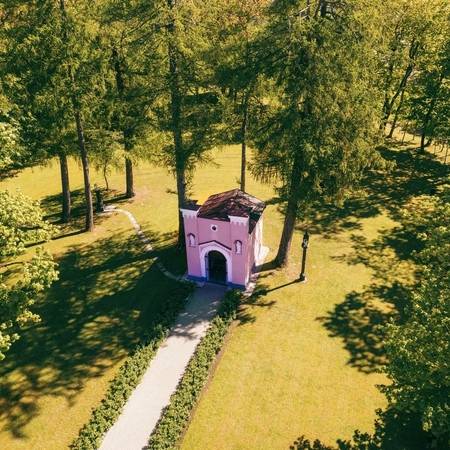The Oginskiai family chapel-mausoleum in Rietavas was built in the second half of the 19th century. It was designed by the architect who built the church, Fridrichas Augustas Štuleris. The chapel, like the church, is in neo-Romanesque style. Inscriptions inside the chapel indicate that its marble altar was designed by the sculptor Leo Bukno from Brussels. During the Soviet period, the chapel-mausoleum was abandoned, the altar was broken, the grounds were overgrown with shrubs and turned into a garbage dump. It was restored for the first time in the 1990s. The impressive ceiling of the mausoleum chapel has been preserved to this day. The walls of the chapel-mausoleum contain three burials: Irenėjus Oginskis' wife Olga in 1899 and her sons (Mykolas Oginskis, owner of Plungė Manor in 1902 and Bogdanas Oginskis, owner of Rietavas Manor in 1909). It is believed that Irenėjus Oginskis died in Rietavas in 1863 at the age of 55. He may have been buried next to the chapel-mausoleum. The Prince's grave is marked by a black stone pedestal-tombstone. On it stood a white marble statue of a trumpeting angel, which disappeared during the war. It has been hypothesised that Irenėjus Oginskis faked his death to avoid reprisals for his support of the 1863 uprising, and secretly went abroad himself. The chapel is flanked by a 19th-century cast-iron bell tower with a bell in neo-Gothic style.

+1



Reviews